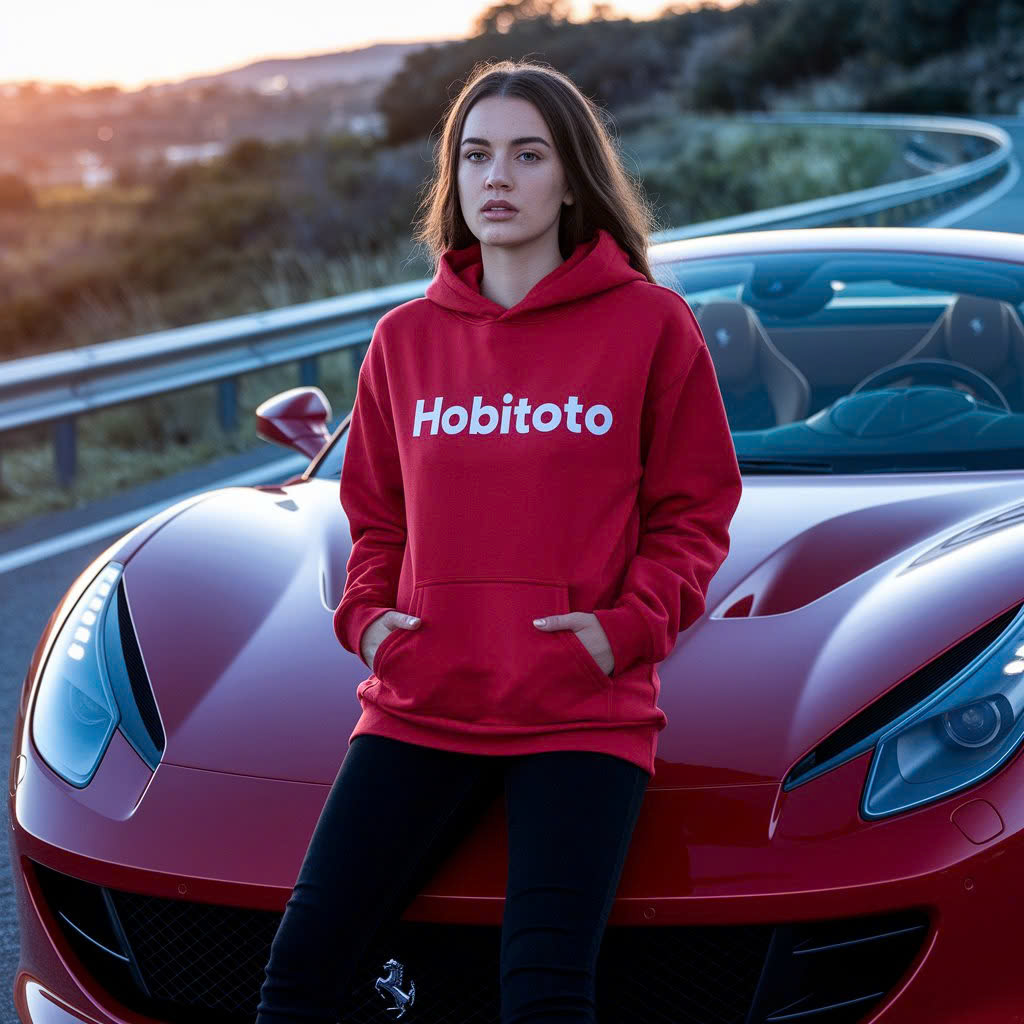The hoodie has evolved far beyond its original purpose as a practical garment designed for warmth and protection. Today, it stands as a cultural emblem that transcends generations, geographical boundaries, and social classes. Its journey from a simple, utilitarian piece of workwear to a symbol of rebellion, creativity, and technological promise is a story of constant adaptation and reinvention. This article explores the evolution of the hoodie, examining its origins, its cultural and social impact, design transformations, economic influence, sustainability challenges, and the promising future of wearable technology.
The origins of the hoodie are deeply rooted in practicality. In the early decades of the 20th century, workers, athletes, and laborers required garments that could protect them from the elements while allowing for freedom of movement. Early hooded sweatshirts were constructed with heavy cotton and durable materials to provide essential insulation and comfort in harsh weather conditions. These garments featured a simple design with a loose fit, a drawstring hood, and a front pocket—elements that ensured functionality rather than style. In factories and outdoor settings, the hood was a vital addition that shielded the head and neck from cold winds and rain. During wartime, soldiers and pilots recognized the benefits of a hooded design, further establishing the garment’s reputation for utility.
As industrialization and urbanization expanded in the mid-20th century, the hoodie gradually began to enter everyday life. No longer confined solely to work environments, it became a common item among students, athletes, and those navigating the urban landscape. The comfort and practicality of the hoodie made it a natural choice for people seeking reliable everyday attire. Its unassuming design, originally intended solely for warmth, soon became an integral part of casual wear.
The cultural transformation of the hoodie began in earnest during the 1960s and 1970s—a time marked by social upheaval and the rise of countercultural movements. In urban centers, young people began to see the hoodie not just as a piece of clothing, but as a symbol of resistance and individuality. In skate parks and city streets, the hoodie emerged as a uniform for those who rejected conventional norms. Its simple, adaptable design provided an ideal canvas for self-expression; individuals began customizing their hoodies with patches, hand-painted slogans, and graffiti-like designs. This personalization was a form of silent rebellion, allowing wearers to communicate their unique identity without words. The hoodie quickly became synonymous with a nonconformist attitude—a badge of honor for those who stood apart from mainstream society.
By the 1980s, the hoodie had cemented its place as a staple of urban fashion. Influential musicians and artists, especially those involved in hip-hop, punk, and alternative rock, adopted the hoodie as a key component of their style. Music videos and film appearances further propagated its image as an emblem of cool defiance and relaxed confidence. For many, pulling the hood up signified more than just physical warmth; it represented a personal retreat, a way to carve out a private space in a crowded, impersonal city. The hoodie came to embody both the comfort of anonymity and the power of self-expression.
Design innovation has continuously redefined the hoodie over the decades. The earliest models were straightforward—loose, comfortable, and unadorned. However, as its cultural significance grew, so did the variety of styles and features. Modern hoodies now come in an impressive array of cuts, colors, and materials. Designers have experimented with different fabrics, ranging from the classic cotton to advanced blends that incorporate synthetic fibers, fleece, and moisture-wicking textiles. These innovations have enhanced the functionality of the hoodie, making it suitable not only for casual wear but also for athletic activities and outdoor adventures.
Contemporary design has also embraced new construction techniques and embellishments. Zippered fronts, adjustable cuffs, contoured hoods, and hidden pockets have become common features, offering both aesthetic appeal and enhanced practicality. The advent of digital printing and embroidery has transformed the hoodie into a customizable canvas for art. Limited-edition releases and collaborations with high-profile artists have elevated the hoodie from a mass-produced commodity to a collectible piece of wearable art. Today, consumers have the opportunity to design their own hoodies, selecting from a vast palette of colors, patterns, and personalized messages. This degree of customization not only reflects individual tastes but also democratizes fashion by allowing every wearer to contribute to the ongoing evolution of the garment.
Beyond its physical design, the cultural impact of the hoodie is profound and multifaceted. In the realm of popular culture, the hoodie is a recurring motif in music, film, and art. Its presence on stage, in music videos, and in street art projects has cemented its status as an icon of urban cool. For many, the hoodie symbolizes both resilience and vulnerability—a garment that protects its wearer from the harsh realities of the outside world while offering a sense of identity and belonging. The act of “hooding up” can be seen as a personal ritual, a way to retreat into one’s own space while simultaneously engaging with a larger cultural narrative.
The hoodie has also been a powerful tool in political and social movements. Throughout history, protestors and activists have used the hoodie as a subtle yet potent symbol of solidarity. Whether in peaceful demonstrations or in more turbulent times, hoodies have been worn as expressions of dissent and calls for change. The anonymity provided by the hood can be both liberating and protective, allowing individuals to participate in social movements without fear of retribution. This duality—offering both concealment and communication—underscores the hoodie’s ability to adapt to the needs of its wearers in various contexts.
Economically, the hoodie is a major force in the global apparel market. Its widespread appeal has ensured that it occupies a unique position across various market segments. Fast fashion retailers produce hoodies in staggering quantities, making them accessible to a broad audience at affordable prices. Simultaneously, luxury brands and independent designers have elevated the hoodie into an exclusive fashion item through limited-edition releases and high-profile collaborations. This dichotomy enables the hoodie to serve as both a mass-market staple and a coveted collector’s item, depending on the context and the level of customization.
The global supply chain for hoodie production is extensive, involving manufacturing hubs in Asia, Eastern Europe, and Latin America. These regions offer the technical expertise and cost efficiencies required to produce high-quality hoodies at scale. However, the mass production of hoodies also brings significant ethical and environmental challenges. Traditional textile manufacturing can be resource-intensive, consuming vast amounts of water and energy while generating chemical waste. Increasingly, consumers are demanding transparency and sustainability in the products they buy, prompting companies to adopt more eco-friendly practices.
In response to these challenges, many brands are shifting toward sustainable materials and ethical production methods. Organic cotton, recycled polyester, and biodegradable fabrics are being incorporated into hoodie manufacturing to reduce environmental impact. Innovations in dyeing and finishing, such as waterless dyeing and digital printing, are further minimizing resource use and waste generation. Ethical labor practices are also gaining prominence, with brands seeking third-party certifications and engaging in transparent supply chain audits to ensure that workers receive fair wages and safe working conditions. These sustainable and ethical practices not only benefit the environment and improve social conditions but also resonate with a new generation of consumers who prioritize responsibility and transparency in their purchasing decisions.
The future of the hoodie appears rich with potential as technology and sustainability continue to shape the fashion industry. One of the most exciting prospects is the development of “smart” hoodies. Advances in wearable technology are paving the way for garments that integrate sensors and connectivity features. Imagine a hoodie that monitors your heart rate, tracks your physical activity, or even adjusts its insulation based on your body temperature and the surrounding climate. Such innovations could transform the hoodie into a multifunctional device that supports personal health and enhances everyday comfort. Although these technologies are still emerging, they signal a future in which clothing not only meets our aesthetic and practical needs but also contributes to our overall well-being.
Digital customization is another frontier that promises to redefine the relationship between consumer and product. Online platforms now enable customers to design their own hoodies by selecting from a wide range of colors, patterns, and graphic elements. This on-demand production model reduces waste by ensuring that garments are manufactured only when there is a confirmed order, leading to more sustainable production practices. Furthermore, digital tools empower consumers to express their individuality in ways that were previously unimaginable, blurring the lines between mass production and bespoke craftsmanship. In a world where personal expression is increasingly valued, this level of customization enhances the hoodie’s appeal and reinforces its role as a dynamic canvas for creativity.
Social media has played a pivotal role in amplifying the global impact of the hoodie. Platforms such as Instagram, TikTok, and Pinterest are filled with images of hoodies styled in myriad ways—from minimalist, monochrome looks to bold, graphic statements. Influencers and everyday users alike share their personal takes on hoodie fashion, creating a vibrant digital culture that continually evolves and inspires. This interconnected online community not only spreads trends rapidly but also fosters a sense of belonging among individuals who identify with the hoodie’s ethos of comfort and rebellion. The viral nature of social media challenges and campaigns further cements the hoodie’s status as a cultural icon, bridging the gap between high fashion and streetwear.
In different parts of the world, regional designers have reinterpreted the classic hoodie to reflect local aesthetics and traditions. In many Asian cities, for example, designers incorporate elements of traditional motifs and fabrics into contemporary hoodie designs, creating a unique fusion of modern style and cultural heritage. Similarly, in parts of Europe and Latin America, the hoodie is reimagined with local craftsmanship and artisanal techniques, resulting in garments that tell stories of regional identity and pride. This global adaptation underscores the hoodie’s versatility and its ability to serve as a universal language of style—one that can be adapted to reflect diverse cultural narratives while maintaining a core essence of comfort and individuality.
The cultural influence of the hoodie extends into art, music, and social activism. Many renowned musicians, artists, and creative figures have embraced the hoodie as part of their signature style, using it as a symbol of authenticity, resilience, and nonconformity. In music videos and film, the hoodie often serves as a visual shorthand for urban cool, a marker of rebellion against the conventional. Its use in public protests and social movements further illustrates its power as a medium for expression; when worn by activists, the hoodie communicates a collective desire for change, a call for solidarity, and a statement of personal defiance against injustice.
Economically, the hoodie remains a robust and influential segment of the fashion industry. Its versatility—catering to both budget-conscious consumers and luxury markets—ensures that it occupies a unique space in retail. Fast fashion brands mass-produce hoodies at accessible price points, while high-end labels release exclusive, limited-edition collections that attract a discerning clientele. These dual market strategies reflect the hoodie’s broad appeal and its capacity to adapt to various consumer needs. The dynamic interplay between mass production and limited-edition exclusivity creates a vibrant marketplace where the hoodie is both an everyday essential and a coveted collectible.
Looking to the future, the potential for further evolution of the hoodie is immense. Technological advancements, such as the integration of smart fabrics and wearable sensors, promise to add new dimensions of functionality to the garment. Environmental and ethical imperatives will likely drive continued innovation in sustainable materials and production methods. At the same time, the growing trend of digital customization and on-demand manufacturing will empower consumers to take a more active role in shaping their fashion choices. The next generation of hoodies may well be a blend of art, technology, and sustainability—garments that not only provide comfort and style but also contribute to personal wellness and environmental stewardship.
In summary, the hoodie is much more than a piece of clothing—it is a dynamic cultural artifact that encapsulates the spirit of modern life. Its evolution from a practical workwear item to a global symbol of individuality and rebellion reflects our collective journey through times of change, creativity, and innovation. The hoodie offers a unique blend of comfort and functionality, serving as both a protective shield and a canvas for self-expression. It bridges the gap between diverse communities and cultures, uniting people through a shared language of style and resilience.
As we navigate an increasingly complex and interconnected world, the hoodie stands as a timeless emblem of human ingenuity. It challenges conventional boundaries, adapts to new technologies, and redefines what it means to be truly comfortable in a fast-paced, ever-changing society. Whether it is worn as a personal statement, a tool for social activism, or a canvas for digital art, the hoodie continues to inspire and connect us. Its journey is a testament to the power of simplicity and the enduring potential for reinvention—a reminder that even the most unassuming garments can carry profound meaning and shape the way we experience the world.
The future of the hoodie is bright, marked by ongoing innovation in design, sustainability, and technology. As new ideas emerge and consumer expectations evolve, the hoodie will undoubtedly continue to adapt and redefine itself. It will remain a constant companion in our lives—a symbol of comfort, creativity, and the boundless possibilities that lie ahead. In celebrating the hoodie, we celebrate not only a garment but also the spirit of individuality and the power of collective expression that unites us all.




Leave a Comment
Your email address will not be published. Required fields are marked *